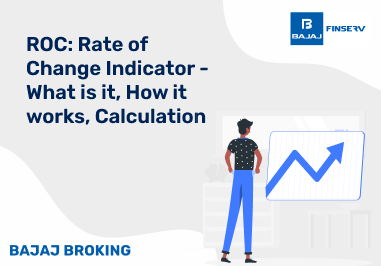Treasury bonds are a part of the financial world that an investor can utilise as a relatively safe and stable investment. These are long-term debt obligations issued by the government to fund various activities. For low-risk return seekers, treasury bonds may form a good part of a diversified portfolio. This article describes what is treasury bond, the types, risks, benefits, and tax implications related to these financial instruments.
What is Treasury Bond in Finance?
A treasury bond is an issue of government debt security issued to finance public projects or the government's expenditures. Such bonds usually have a maturity period ranging between 10 and 30 years and pay interest at intervals, usually six months, until the end of maturity. Buyers of treasury bonds are lending money to the government, which, in return, undertakes to pay back the amount lent with the addition of interest periodically until the date of maturity.
Treasury bonds are an example that is less risky to be considered because they could be seen as being backed by the credit of a government. For this reason, this is why there is an appeal from risk aversion investors for such returns that are stable and known. The interest rate with treasury bonds is normally lower when compared to the rest. However, it has been seen to be safer, though. For that reason, it is vital for people who need long-term investment.
In simple words, a treasury bond is an instrument or legal document issued by the government to borrow money and return it with periodic interest alongside the principal amount at maturity. Hence, their sole appeal is to stability since it guarantees security when the nation is uncertain about the economy.
Additional Read: What is Trading Account: Definition, Types & Benefits
Types of Treasury Bonds
Knowing the types of treasury bonds will make one in a better position to choose the right investment. Treasury bonds can be categorised in terms of their structure, interest payment, and maturity periods.
1. Long-term Treasury bonds
Long-term bonds carry maturity periods as long as 30 years. In such a case, government backing exists for such bonds, hence stable and low in interest rates. Payments of interests receive periodic returns during the term of a bond and thus suit the people looking for a regular stream of income.
2. Zero-Coupon Treasury Bonds
Zero-coupon bonds do not offer periodic interest payments, issued at a discount to face value, and the full face value is paid upon maturity. Therefore, the difference between the purchase price and the face value constitutes the return to the investor. Returns are perfect for the investor who can wait until maturity for returns.
3. Callable Treasury Bonds
Callable treasury bonds allow the issuer, mainly the government, to retire the bond before its maturity date. Such a bond can be of immense help to the government to retire early in case the interest rates fall. Callable treasury bonds do provide flexibility to the issuer, but it also means reinvestment risk for the investor when the bond is called before maturity.
These types of treasury bonds have unique features that can meet the needs of various investors. Each type has characteristics that are different from the others, and knowing these is important in selecting the right type of bond depending on investment objectives and risk tolerance.
Additional Read: Maturity Date
Risks Involved with Treasury Bonds
Although the treasury bonds are a nearly risk-free investment, they still are not a risk-free investment. There are some major risks involved with an investment in treasury bonds:
1. Interest Rate Risk
Treasury bonds are very sensitive to interest rate changes. If interest rates increase, the price of the bond decreases, and so on. Hence, interest rate fluctuations may impact the actual market value of the bond if you have to sell it before its maturity date.
2. Inflation Risk
Inflation reduces the purchasing power of fixed income returns. Treasury bonds, for example, would produce lower real returns if inflation is too high, given that fixed interest payments will yield a lower real return.
3. Reinvestment risk
Available options on redemption of the treasury bond might be at low interest rates, especially where there are falling interest rates. Thus, the risk somewhat relates to investors deriving income from treasury bonds. Nevertheless, with the attached risk, treasury bonds remain largely ranked among the safest investment vehicles because of government guarantees. This makes it possible for investors to determine if such an investment would suit their strategy.
How Treasury Bonds Work
The article is designed to help investors understand how treasury bonds work for those investors who wish to include in their investment portfolios these securities. Treasury bonds are sold to the public through auctions in which the institutional investor and individuals purchase these issues. Subsequently, such bonds may be sold over the counter subsequent to the auctions.
Once an investor purchases a treasury bond, the investor will be receiving regular interest payments usually semiannually. These are made until the bond reaches its maturity date where the investor receives the face value of the bond. The interest payments are fixed and, therefore, a reliable source of income. This structure is attractive to those seeking stable long-term returns.
Treasury bonds are usually equipped with credit ratings that prove the government's strong creditworthiness. However, the knowledge of credit ratings and their implications is very important for the analysis of any investment. When getting to know what is treasury bond, one should know the process by which it generates returns for investors.
Pros and Cons of Treasury Bonds
Like any other investment, treasuries have pros and cons. The following can guide an investor to make a balanced and wise decision.
Pros
Low Risk: Being government-backed, treasury bonds by nature are less risky as compared to other securities.
Predictable Income: The flow of interest income is predictable.
Liquidity: Treasury bonds are very liquid and can easily be sold in the secondary market.
Cons
Lower Returns: Treasury bonds have lower returns since they are low-risk instruments, just like corporate bonds or stocks.
Interest Rate Sensitivity: The rate of interest solely determines the value of the bond, and it is susceptible to any change in it.
Inflation Risk: Fixed interest payments may become eroded in an inflationary environment.
Understanding both the pros and cons will ensure a rational investment choice regarding treasury bonds.
Additional Read: Difference Between Sensex and Nifty
Taxes with Treasury Bonds
Normally, the tax on treasury bonds is not complicated. However, this depends much on the jurisdiction. Many cases reveal that the interest income from the treasury bonds is exempt from state and local tax but taxable by federal income. Nonetheless, there are other taxes that may be incurred by the investors depending on personal situations.
Actually, the tax benefits from the treasury bonds get even much bigger for taxpayers who come in the higher tax bracket. For example, tax-free state interest might make the treasury bonds look relatively attractive when compared to other fixed income securities totally taxable. Once again, a capital gain realized after selling off a treasury bond before it redeems becomes liable for capital gain tax.
Professional advice should be sought from tax experts in order to know the precise tax implications and benefits of investments in treasury bonds. Tax and obligations knowledge would therefore maximize after-tax returns on investment in treasury bonds.
Treasury Bond Examples
1. 10-Year Treasury Bond
The most popular treasury bond is the 10-year treasury bond, which matures after a period of 10 years and has a fixed rate of interest. It is used as a benchmark for most other interest rates and is often used by investors seeking median investment stability.
2. 30-Year Treasury Bond
The 30-year treasury bond is one of the longest-maturity government bonds. It appeals to long-term investors because it provides stability and predictability as it promises fixed returns over three decades.
3. TIPS Treasury Inflation Protected Securities
TIPS are treasury bonds that help investors to be protected against inflation; their own principal value adjusts according to inflation which provides a hedge against erosion of purchasing power.
4. Treasury Floating Rate Notes (FRNs)
FRNs provide floating interest rates with the 13-week Treasury bill rate. Therefore, they are relatively free from the risk of variations in interest rates and benefit those who believe interest rates would go up.
These are thus examples of other types of treasury bonds and hence suit different needs of investments, whether for inflation protection or long-term stability.
How to invest in Treasury bonds?
Treasury bonds can be purchased through various channels, such as an auction by the government or through a brokerage. A few steps are required primarily:
1. Opening a trading account
It allows the possibility of buying and selling treasury bonds on the secondary market through an account in a brokerage firm.
2. Procurement through direct government auctions
Treasury bonds can be purchased directly from government auctions; governments normally hold auctions regularly. Investors should buy treasury bonds based on financial goals, risk tolerance, and investment horizon. Additionally, understanding the complexities of the bond market might be helpful for investment outcomes.
Conclusion
One of the most important constituents of the fixed-income market is the treasury bond. A low-risk investment in government security, the treasury bond has become one of the favorite investments. Knowing what a treasury bond is, its types, risks, and tax implications can make investors decide if they suit their financial plans. Given the predictability of returns and tax benefits, treasury bonds may form a useful component of any well-rounded investment portfolio for those looking for stability.














